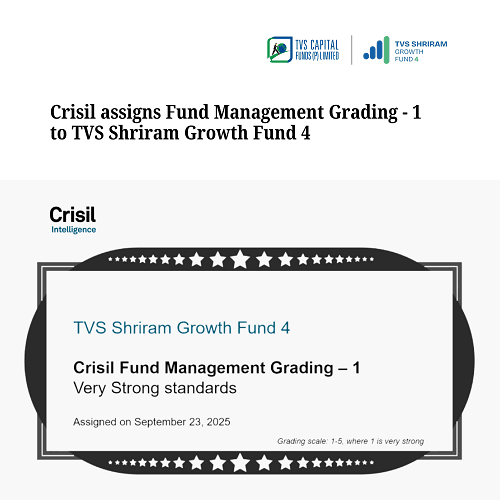Rupee in 68.5-74.5 range
Given the nature of slowdown, India is likely to witness a slow grind towards recovery, said Singapore’s banking group DBS in its “India Annual Outlook 2020” report on 13 Dec 2019.
Fii reproduces the report which has cut 2019 economic growth to 5% from 5.5% forecast earlier.
The bank has also pegged Indian rupee at 68.5-74.5 to the dollar range with a weak bias.
Economics
This year’s narrative on the Indian economy was dominated by a sharp deceleration in economic activity and persistent financial sector stress. Growth eased from 8% YoY in March 2018 quarter to a likely sub-5% in 3Q and 4Q19. Idiosyncratic domestic factors have played a key role in pulling down growth.
This slowdown is driven by an interplay of factors. This is part cyclical and part structural, which points to the likelihood of a slow climb to recovery in 2020. Cyclical concerns are underscored by the tight financial conditions despite an aggressive rate easing cycle this year. Liquidity premia, credit risk premia as well as term premia (spreads between Repo rate and 10Y GSec is at a multi-year high of 140bp) are elevated, hindering efficient policy transmission.
Outlook. Our GDP Nowcast model suggests growth ended 2019 on a somber note. With more high-frequency indicators surprising on the downside, we dial down our FY20 real GDP growth to 5% YoY (prev 5.5%), with the likelihood of two quarters of sub-5% growth and inching up past 5% in 1H20. Favourable base effects, easier monetary conditions could support demand and while global conditions stabilize at lows. FY21 GDP growth is pegged at 5.8% YoY. Demand-supportive measures are expected in February’s Budget, which should help growth in the short-term. Resumption of government spending coupled by inventory restocking is expected to help production, while non-financial sectors underpin services output.
We remain hopeful of three-pronged support – monetary, fiscal and macro policies
Firstly, monetary policy. Rate cuts were the key source of policy support in 2019 with a cumulative 135bps cuts, most in the region and taking the repo rate to 5.15%. Firming up of recent inflation numbers does put the central bank in a bind.
While we are at the last leg of easing, one needs to be mindful of: a) unlike past episodes where supply shocks could lead to generalized price pressures, the present phase of weak consumption and soft confidence surveys lower the risks of a broader pickup in prices. This could give policymakers the confidence to ease without worrying over broader rise in inflation; b) full-year inflation is still running close but below the 4% target.
A pause at this juncture could reverse part of the transmission that has occurred through the bond markets, making it an uphill task to convince banks/ markets to pass on previous rate cuts. With the output gap in negative, dovish policy will stay its course. We hold out for another 50bps of cuts in FY20, divided between December 2019 and March 2020 quarters.
Next is fiscal policy. Since the government signaled fiscal consolidation in the full-year FY20 Budget in FY20, growth conditions have deteriorated. Weak growth has impacted revenue growth, compounding worries over an already weaker run-rate for tax revenues. As it stands, the evolving fiscal math points to an at least 0.2-0.3% of GDP miss in the FY20 deficit target. Nominal GDP is also below the assumed 12% YoY this year. We expect the FY20 fiscal deficit to be revised to -3.6% of GDP vs budgeted -3.3%. For FY21, February 2020 Budget assumes importance. Given weak growth dynamics, some extent of slippage in FY21 might be backed by the FRBM escape clause.
Lastly, macro policies will also be important to draw in foreign capital – investments and portfolio flows. Work on improving hard and soft infrastructure, expediting dispute resolution, clarity on contractual obligations etc. will be important aspects for investors. Year-to-date equity and debt FPIs total USD10bn, vs net outflows last year. Assuming a conducive global environment amid flush liquidity and yield-hungry investors, we expect FY21 portfolio flows to also stay supportive.
Political stability and reform agenda. Following big-ticket reforms in the first term, we expect smoothening its implementation to be in focus in the first part of the government’s second term, including simplifying the GST mechanism, strengthening the banking/ non-bank sector and tightening the bankruptcy law. Near-term priority would be to shore up growth, initially by boosting demand by fiscal means and thereafter by addressing structural constraints. In 2H19, a sharp cut in corporate tax several piecemeal sectoral measures, were the highlights. The May 2019 elections saw the ruling party extend its support base in the Lower House. The Upper house math is also expected to shift in favour of the ruling coalition over 2020 and 2021, strengthening the coalition’s political foothold.
External balances. Current account dynamics are favourable. Trade deficits have narrowed in the past three months as lackluster exports are accompanied by sharp slowdown in non-oil, non-gold imports demand; latter reflecting weak investment and consumption demand locally. We expect FY20 current account deficit to narrow to -1.4% of GDP this year and -1.8% in FY21, keeping within the comfortable threshold of sub-2%, assuming steady oil prices.
External vulnerability indicators are on the mend, helped by the central bank’s reserves accumulation. Total reserves stood at a record high of US$440 billion by late-October, with imports coverage at a healthy 11x months. Total external debt has risen to a record high of US$557 billion due to a sharp increase in external commercial borrowings. While long-term external debt is nearly equal to the total FX reserves, the closely watched short-term debt (due within a year) is at 0.3x of the reserves stock. On residual maturity basis (i.e. portion of total debt that is due within the year), short-term debt makes about 56% of total reserves as of June 2019 vs 57% in March 2019.
Based on our analysis of the gross external financing requirement ratio (short term debt plus current account vs reserves), India besides Indonesia, remain exposed to stress if funding conditions unexpectedly tighten in 2020.
FX: Rupee’s depreciation bias has returned
Look for the Indian rupee to hold a 68.5-74.5 range with a weak bias. The Reserve Bank of India is expected to further lower rates by another 50bps by March 2020 after the total 110bps delivered since February. Conversely, the Fed is likely to have completed its mid-adjustment cycle after its third cut in October.
Rates: Steepening into flattening
India govvies will hold up relatively well in early 2020 but are somewhat concerned about fiscal issues over a longer horizon. The Reserve Bank of India (RBI) has been on an aggressive easing spree but we suspect that room to cut rates has become more limited into FY21. As such, the bull steepening in the INR curve is starting to look stretched. Thus far, longer-term rates have borne the brunt of budgetary worries. Shorter-term rates have done well as low inflation is supportive of easy monetary policy. However, these dynamics could change over the coming quarters.
-/fiinews.com











